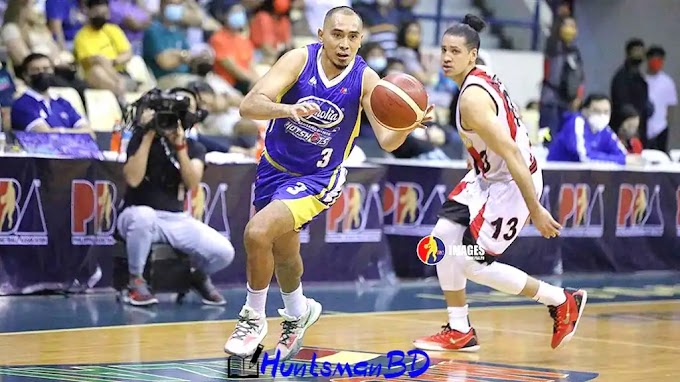Would you like to learn to play tennis, but have you never held a tennis racket in your hand? It's not a problem. Because all tennis players started like this. We all know the feeling of starting with something completely new. On the one hand it is a change, but on the other hand it is also a challenge that we want to master.
As a beginner, you first have to find your way in the “jungle” of tennis. The technique, tactics and rules seem quite extensive at first. So you are probably wondering how you can best approach the topic of learning tennis.
We have put together some useful tips for you in this article. Here's what you can do to see success as quickly as possible.
The right equipment
Tennis, like any other activity, needs the proper equipment. Here's a rundown of the essentials to remember:
- Tennis racquets
- Tennis shoes
- Tennis clothes
- tennis balls
- tennis bag
Many novices overlook this concept entirely. Of course, getting a racket from Roger Federer or Rafael Nadal is appealing, but these models are meant for an entirely other level of play. The rest of the team is in the same boat.
If you've been shopping for new accessories, you've probably observed that it's not always easy to get the best equipment. You've practically been pounded to death by the flood of varied models.
In this scenario, you may find numerous tips on our website. If you're having trouble deciding on the correct equipment, our " Tennis Equipment " section will have the answers.
Tennis equipment, contrary to popular belief, is rather inexpensive nowadays. High-quality items may be bought on a relatively cheap price.
Some retailers even let you to test out various rackets for a modest charge. Then you select whether or not to purchase one of these rackets. You can also meet someone who will lend you their racquet or balls.
Locate a tennis court.
The first critical step is conducted once the equipment has been built. In theory, you can now proceed right to the field. But where do you currently play tennis?
You basically have two options for getting to the tennis court. Joining a tennis club is the most well-known option. Because the particular tennis facility frequently contains many courts, you may be more flexible in hiring the courts. However, you should be aware that membership fees for clubs and maybe tennis associations will be added to the charges.
Currently, renting a tennis court is the most cost-effective choice. There are several private tennis facilities that offer courts. In most cases, you will be charged per hour. Being a member of a tennis club is significantly cheaper in the long run, that is, for at least many months.
The first steps on the pitch
After locating a suitable location, it is advisable to become acquainted with the field's proportions. A tennis court appears to be a tolerable size until you foot on it. If you are on a clay court, please read our court maintenance requirements first.
You may now begin your first training session. Warming up thoroughly before the start of each training session is ideal. The second most common error made by novices is to begin playing without a warm-up routine. They accept an unreasonably high risk of harm in this manner.
We will undertake two exercises with you to avoid this from happening to you.
You begin by running two circuits around the playing field. One lap is ran at a medium pace, while the other is merely lateral steps.
Your running pace is now required in the second exercise. Stand roughly 3m from the net on one of the two outer sidelines in this example. Your focus is drawn to the opposite sideline, where you will sprint parallel to the net.
You now sprint to the first line of your path, touch it with your hand, and return to your starting location. Put your hand on this line as well. Run to the next line, the center line, touch it, and run again.
The running practice is repeated until you have completed all of the lines. Two additional races will take place after a 30-second pause. This workout is also known as a "pendulum sprint."
These two exercises not only avoid injuries but also help you gain a sense of the vastness of the field. You can now better estimate how long it will take to get from baseline to network, for example.
Learn the punch moves
Now that you have a better understanding of the tennis court, the next step is to begin practicing precise stroke actions. The good news is that you don't need a coach or a playing partner to obtain a basic knowledge of the technique at first. You may save a lot of money if you are motivated and master the basics on your own.
We propose that you begin your tennis training with the fundamental strokes, including the forehand, backhand, and serve. Because they are necessary components of tennis. Instructions for learning the corresponding stroke may be found here: Practicing the fundamental strokes
For many newcomers, the noise seems strange at first. You should absolutely perform some testing to get a sense of the racket. This implies that you must follow the directions, but you must not use a tennis ball. You will gradually gain an understanding of the weight of the racket and its behavior on the swings.
After that, you'll put the racket aside and make identical dry runs with the tennis ball. Stand on the baseline and hit the ball on the ground 10 times. Repeat this step 5 times more. Then, stand up straight, toss the ball in front of you, and catch it again. Maintain the same level of effort throughout this workout.
You will find that tossing the ball becomes increasingly easy. On the serve, proper ball handling is very vital.
Then, in the exercises, mix the racket and the ball. Hold the tennis racket with the face horizontal to the ground and try to strike the ball as many times as possible in the face. If this works well, make the practice more challenging by twisting the racket 180° after each ball contact.
The basic punches are then practiced throughout the punching action. Throw the ball in front of you sideways, then strike it with the stick on the forehand and backhand. Then repeat with your serve.
Find a training partner
It's time to choose a training partner now that you've gotten some familiarity with the movement patterns. Look for others that share your desire to improve their tennis skills. It is critical that you are on the same playing level.
It is pointless to play against a tournament player who is displaying his power. That would be too frustrating and take the pleasure out of the game. His companion, on the other hand, must not be too weak, or he will not develop further.
Basically, having a playmate opens up whole new training opportunities for you. You may now practice the remaining shots, such as volleys and butterflies. You will also improve your training effectiveness since you will be able to pass the balls to each other. In the end, both parties profit.
The objective is to mix up the workouts. You may, for example, create a "cross duel" to practice your forehand or backhand. More specifically, you stand diagonally across from each other on the baseline and use the identical stroke to pass the balls past each other.
We propose that you also play entire rallies for points to get the competitive juices flowing. If you want to win, you just have to play better tennis.
Start with regular tennis training
Tennis, in general, is a game of constancy. Because you will rapidly unlearn the moves if you do not practice often. It is critical to acquire a specific rhythm in your game if you want to be successful in tennis. You may practice with a playmate as well as receive training courses.
A excellent tennis instructor is distinguished by his assistance in improving your technique. He will evaluate the motions of your shots and provide you with the necessary information based on his experience. In this method, you may learn from a specialist what you're doing incorrectly and how to fix it.
You should be informed, however, that this service is not free. Coaching classes are by far the most significant of all tennis expenses. How much does a training session cost? This is mostly determined by the trainer's qualifications. A single class typically costs 30 euros.
The money is, of course, split among the players in group training. Summer training is often less expensive than winter training because the hall and power are still paid for in the winter.
Tennis instructors frequently offer sample sessions or trial courses. This offers you an understanding of tennis training so you can choose the best instructor for you.
set a goal
What do I hope to accomplish in tennis? Where will I be or where will I play in one, three, or five years? These are important questions to ask oneself. One night, sit quietly and jot out your tennis objectives.
You are not required to become the next Rafael Nadal. There are other factors to consider, such as having pleasure while playing or playing for a specific team.
The most important thing is that you have objectives and that you think about them on a regular basis. This offers you an extra burst of drive if things don't go as planned on the field.


.webp.jpg)




